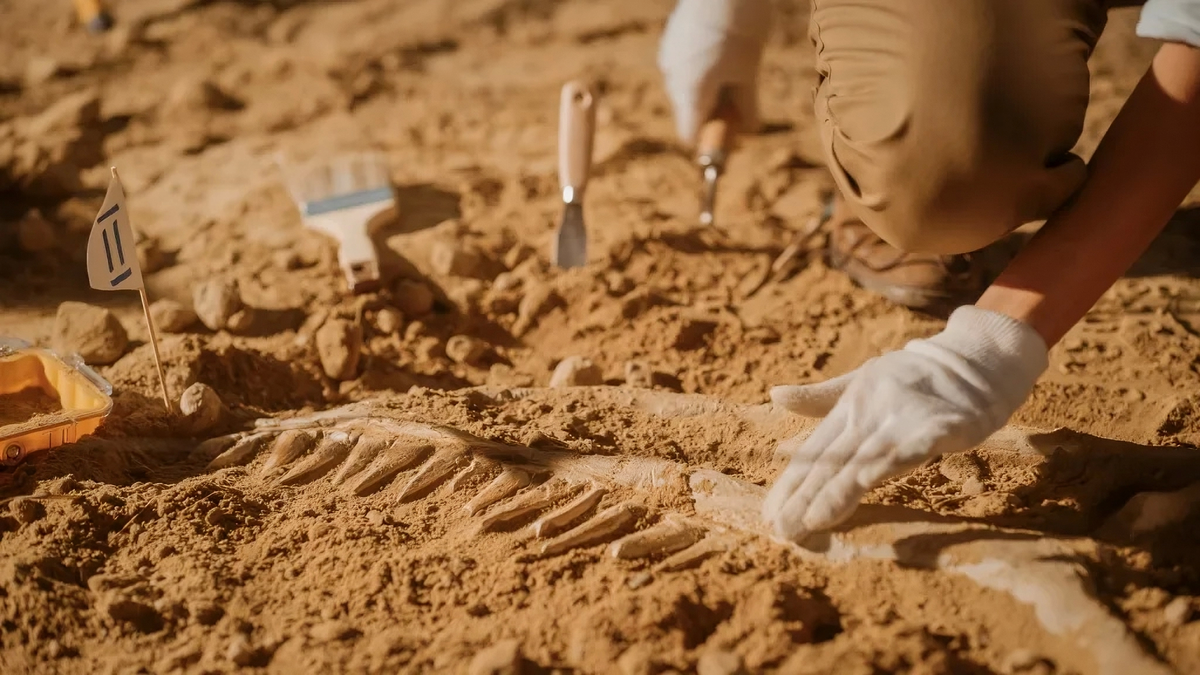In detail, the piece was found in Rees, a city of just over 20,000 inhabitants located in the German district of Kleve. The brooch provides information about cultural exchange and the presence of luxury objects even in historical times of strong migrations in Europe, unrest and difficulties, which caused the subsequent fall of the Roman Empire.
The impressive archaeological discovery
State archaeologist Detlef Jantzen described the piece found as one of “the most important discoveries of the year.” The accessory has approximately 1300 years old.
The piece is a gold and gilt silver brooch, decorated with almandine garnets, a type of dark red mineral, with purple tints. The pin was made with the cloisonné techniqueand displays the embedded stones that form a geometric design of intertwined snakes.
archaeological-gold-brooch.jpg
The brooch found in Germany.
DPA
The cloisonné technique is a old way used to decorate metal objectsin recent centuries through the use of glazed enamel, and in ancient periods also through the use of inlays of precious stones, glass and other materials.
Gemstones are valued from late roman period – stretching from Diocletian’s rise to power in 284 to the end of the Western Roman Empire in 476 – placed in rectangular cells with curved edges, ending in small snake heads formed by kite-shaped garnets.
The archaeologists who participated in the discovery highlighted that the pstones were polished with precision and fitted into place exactlywhich marks the great skill of the goldsmith.
Other examples of this style were located in noble burials in the Rhine River and Sweden. However, the discovery in Rees, Germany, raised questions about the period of migrations in Europe – which spanned from 300 to 600 AD, which was characterized by strong massive movements of tribes that caused the fall of the Western Roman Empire.
Did they discover Noah’s Ark? New evidence shakes archeology and would prove the Bible right
The story of Noah’s Arka story from the Bible that captivated humanity’s imagination for centuries, could finally be closer to reality than previously thought. A recent archaeological discovery on Mount Ararat, in Türkiye, reignited the debate about the veracity of this ancient myth.
In detail, a team of researchers from various Turkish universities found evidence that suggests the existence of a massive flood in the regioncoinciding with the time in which, according to the Bible, the universal flood. Scientists have found remains of rock and soil with clay materials, marine substances and shellfish fossils, dated between 5,500 and 3,000 years BC
Archaeologists used advanced techniques and cutting-edge technology in geological analysis to study the samples found on Mount Ararat. The results of these analyzes revealed that the area was submerged under water for a long periodwhich coincides with the biblical description of the universal flood.
This discovery has generated great controversy in the scientific and religious world. Some experts argue that this evidence supports the veracity of the biblical story of Noah’s Arkwhile others are more cautious and point out that more research is needed to confirm this theory which, for the moment, would be a simple coincidence.
Source: Ambito
I am Pierce Boyd, a driven and ambitious professional working in the news industry. I have been writing for 24 Hours Worlds for over five years, specializing in sports section coverage. During my tenure at the publication, I have built an impressive portfolio of articles that has earned me a reputation as an experienced journalist and content creator.




